A Short History of Vampire Literature (complete 9/08)
- Luxe de Luxe
- Sire
- Posts: 3285
- Joined: Sat Jan 17, 2009 2:50 pm
Re: A Short History of Vampire Literature (updated 8/5)
absolutely wonderful! Thanks so much for posting these, Lucky.
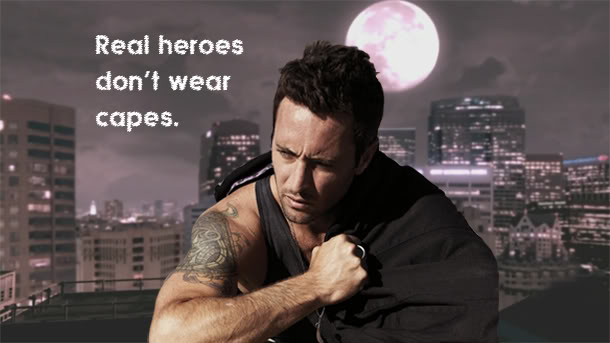
Banner by the talented Hot Micks
- librarian_7
- Forever Moonlightaholic
- Posts: 23481
- Joined: Fri Jan 16, 2009 7:21 pm
- Location: wherever Josef is
- Contact:
Re: A Short History of Vampire Literature (updated 8/5)
Disclaimer—This article surveys a great deal of material, and there will be many topics I simply am not be able to cover in it. Apologies in advance if I miss your favorite vamp…you can rebut me on the discussion boards.
Also, apologies for taking so long to update. This is the next to last part.
Rise of the Heroic Vampire
In 1967, the first major sympathetic vampire emerged into the daylight of an afternoon soap opera.
 Dark Shadows, a daytime serial heavily influenced by the currently popular gothic romances (such as those produced by Victoria Holt), in an attempt to boost its sagging ratings, introduced the character of
Dark Shadows, a daytime serial heavily influenced by the currently popular gothic romances (such as those produced by Victoria Holt), in an attempt to boost its sagging ratings, introduced the character of
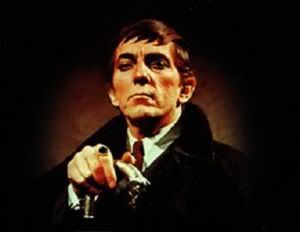 Barnabas Collins, an aristocratic 200-year-old New Englander who quickly became the major star of the show and caused it to become a hit, especially with teenage females, who swooned over the dark melancholic good looks of actor Jonathan Frid. In addition to the series, Dark Shadows spawned a movie, and a host of tie-in novels.
Barnabas Collins, an aristocratic 200-year-old New Englander who quickly became the major star of the show and caused it to become a hit, especially with teenage females, who swooned over the dark melancholic good looks of actor Jonathan Frid. In addition to the series, Dark Shadows spawned a movie, and a host of tie-in novels.
The stage was set for the entrance in the 1970s of two of the most durable and widely read vampire series in the history of the genre: Anne Rice’s Vampire Chronicles and Chelsea Quinn Yarbro’s St. Germain series. The contemporary vampire had arrived.
And just how were these two vampires (and their associates) different from the fanged bloodsuckers of the past?
Anne Rice broke new ground in several ways with Interview with the Vampire in 1976. This was the first mainstream success of a vampire novel for a female author. Although vampires had long held a serious attraction for women, the writers for the most part had been men. Since the publication of Interview, the most successful vampire writers, including Rice, Yarbro, Laurell Hamilton, P.N. Elrod, among others, have been women.
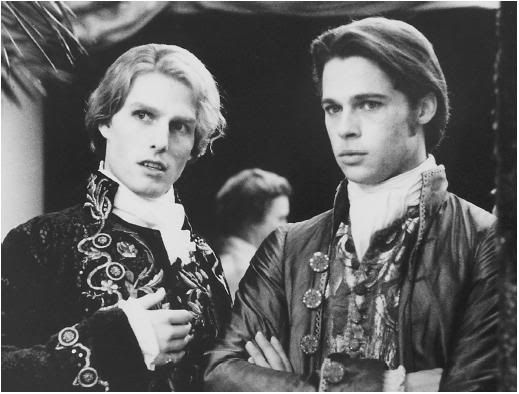 Louis de Pont du Lac, the narrator of Interview, was startling in several ways: he was American, if an exotic denizen of the Louisiana bayou country near New Orleans, and he was a sympathetic character. His lush descriptions of the sensual ecstasy of becoming a vampire brought a new dimension to the vampire novel.
Louis de Pont du Lac, the narrator of Interview, was startling in several ways: he was American, if an exotic denizen of the Louisiana bayou country near New Orleans, and he was a sympathetic character. His lush descriptions of the sensual ecstasy of becoming a vampire brought a new dimension to the vampire novel.
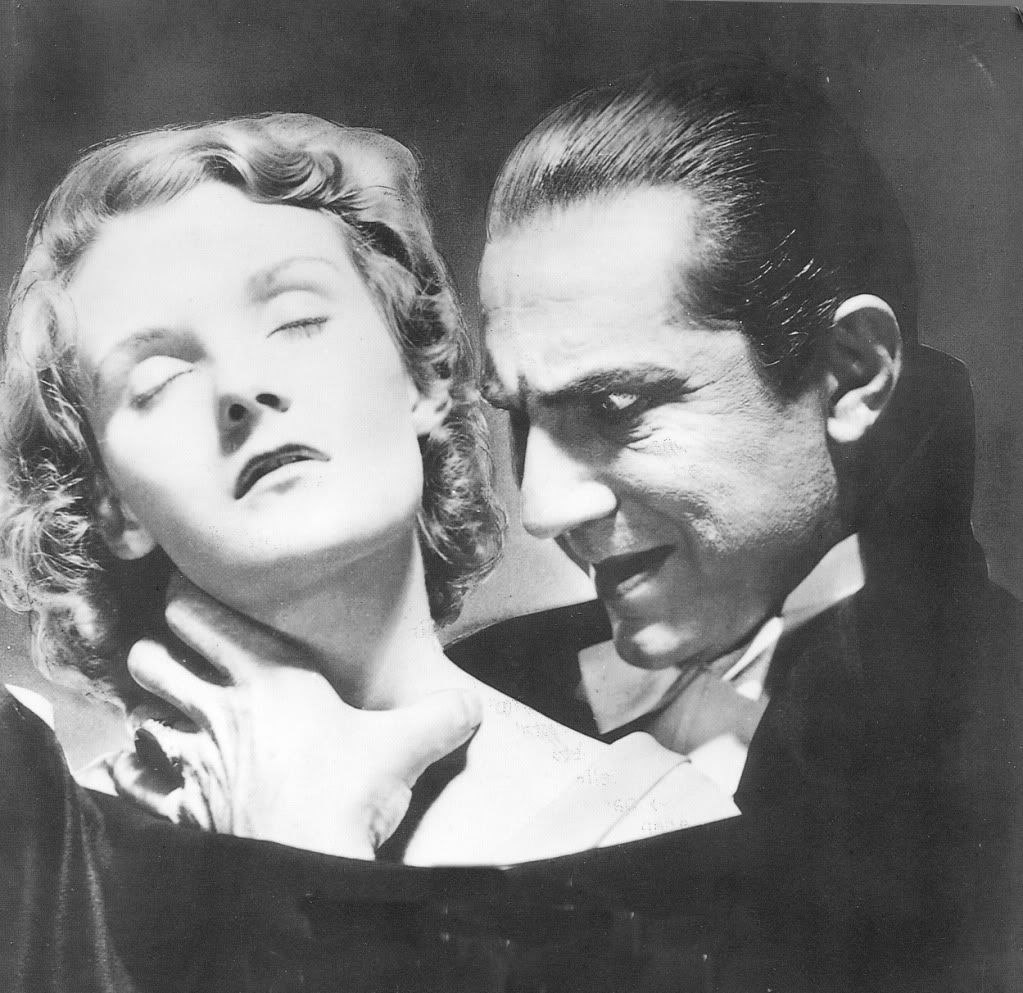
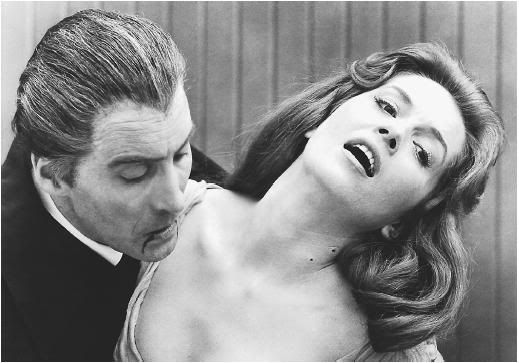 We had seen for some time the victims of Dracula and other vampires swoon orgasmically on screen as the fangs entered their throats, but written descriptions had been external, observing the process and not living it. This novel also saw the beginnings of the development of Rice’s concepts of vampire community, especially in the passages relating to Louis’ and the child vampire Claudia’s discovery of a Paris coven, a concept that would be developed much further in her future novels.
We had seen for some time the victims of Dracula and other vampires swoon orgasmically on screen as the fangs entered their throats, but written descriptions had been external, observing the process and not living it. This novel also saw the beginnings of the development of Rice’s concepts of vampire community, especially in the passages relating to Louis’ and the child vampire Claudia’s discovery of a Paris coven, a concept that would be developed much further in her future novels.
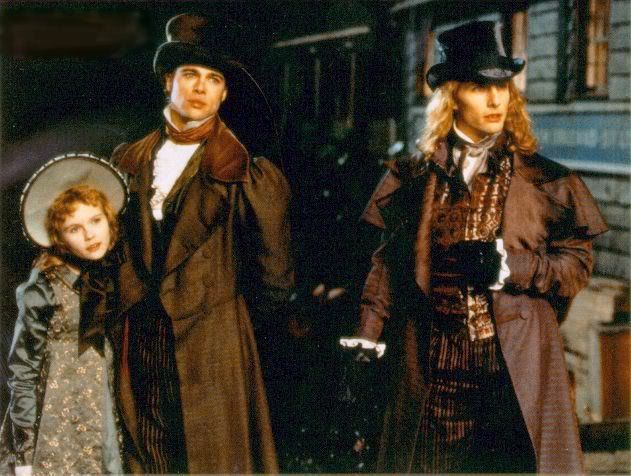 Rice’s vampires, which have grown into a fairly numerous tribe over the course of the past thirty years, are a beautiful, androgynous lot, predominantly male, and far more interested in each other than in the surrounding world.
Rice’s vampires, which have grown into a fairly numerous tribe over the course of the past thirty years, are a beautiful, androgynous lot, predominantly male, and far more interested in each other than in the surrounding world.
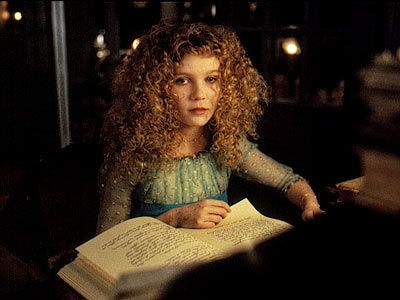
Claudia, the vampire woman trapped in a child’s body, is another of Rice’s innovations on the theme. At first, she forms the child in a parodic nuclear family with Louis and Lestat (a theme which is capitalized on in Neil Jordan’s 1994 film version), but her gradual mental development into a sophisticated predator horrifically appearing to her victims as a beautiful little girl is perhaps the most chilling aspect of the entire novel.
Interview contrasts nicely with Stephen King’s very traditional vampire novel published the previous year, Salem’s Lot.

King essentially transplants Dracula, in the form of Kurt Barlow, to a small town in Maine. Barlow’s vampirism is highly contagious, with everyone bitten turning quickly into a vampire, and very soon the town is hip-deep in very plebeian vampires.

In 1979, Hotel Transylvania introduced the world to the most urbane, gentle vampire it had yet seen. The Comte St. Germain, based faithfully upon the records of a genuine 18th century charlatan and alchemist, who takes sustenance as much from physical intimacy as from the small amount of blood he requires. Throughout the series, which has grown to over 22 books, with another due in December 2009, as well as a handful of associated books, Yarbro has explored the 4000 year life of her vampire hero. Most often he is cast as an observer, the ultimate outsider in every culture, who exemplifies civilized behavior and tender concern for his various lovers throughout the ages. What horror is found in these novels lies not with the vampires, but with the inhumanity of men to each other, and especially to women. For example, in Tempting Fate (1982),
 the monsters are not vampires, they are the brutish Nazis who wantonly destroy Laisha, St. Germain’s foster daughter. His revenge for this atrocity is a terrible thing, to be sure, but few could argue that it is unjustified.
the monsters are not vampires, they are the brutish Nazis who wantonly destroy Laisha, St. Germain’s foster daughter. His revenge for this atrocity is a terrible thing, to be sure, but few could argue that it is unjustified.
While the first vampire based on an historical figure is, without a doubt, the venerable Dracula, whose ties
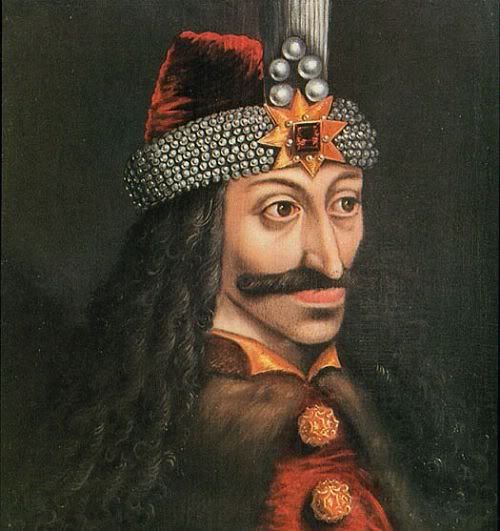 to the historical, blood-soaked Wallachian prince Vlad Tepes are at this point pretty much unquestioned,
to the historical, blood-soaked Wallachian prince Vlad Tepes are at this point pretty much unquestioned,
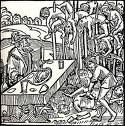 Yarbro succeeded in finding a eminently suitable subject with St. Germain, whose historically documented presence in 18th century France included claims of great longevity, a mystery-shrouded origin, and of spectacular alchemical successes. Part of the success of St. Germain comes from the fact that Yarbro takes her character through millennia of well-researched and well-evoked historical settings.
Yarbro succeeded in finding a eminently suitable subject with St. Germain, whose historically documented presence in 18th century France included claims of great longevity, a mystery-shrouded origin, and of spectacular alchemical successes. Part of the success of St. Germain comes from the fact that Yarbro takes her character through millennia of well-researched and well-evoked historical settings.
 St. Germain became the foremost in a veritable brigade of historical figures turning up as vampires throughout the 80s and 90s. For a few examples, Tom Holland produced books starting with
St. Germain became the foremost in a veritable brigade of historical figures turning up as vampires throughout the 80s and 90s. For a few examples, Tom Holland produced books starting with
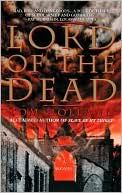
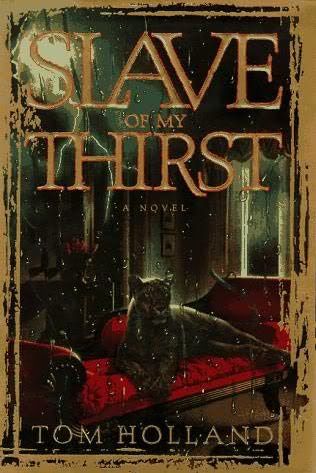 Lord of the Dead (1996) and the sequel Slave of My Thirst (1997), chronicling the adventures of Lord Byron, turned into a, well, Byronic vampire by an ancient, evil Turk. Michael Romkey, in his 1990
Lord of the Dead (1996) and the sequel Slave of My Thirst (1997), chronicling the adventures of Lord Byron, turned into a, well, Byronic vampire by an ancient, evil Turk. Michael Romkey, in his 1990
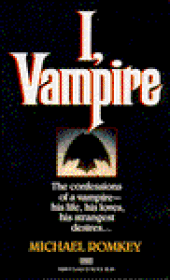 I, Vampire and its sequels presents Mozart, Jack the Ripper, and Tatiana Romanov as vampires.
I, Vampire and its sequels presents Mozart, Jack the Ripper, and Tatiana Romanov as vampires.
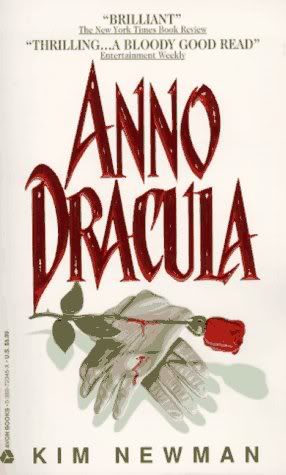 Kim Newman’s Anno Dracula (1992) and its sequels , posits that Dracula did not die at the end of Stoker’s novel, and went on to seduce, marry and convert to vampirism Queen Victoria, setting up a society in which it becomes stylish to become a vampire, or at least associate with them. In the process, he drags in virtually every fictional vampire known to man, as well as most of the luminaries of the late Victorian era. A good bit of Anno Dracula reads like an elaborate in-joke, as one tries to identify every passing reference. (St. Germain and Lestat do come in for unflattering mentions, as well as Carmilla and dozens of others.) And these are by no means the only ones in this vein.
Kim Newman’s Anno Dracula (1992) and its sequels , posits that Dracula did not die at the end of Stoker’s novel, and went on to seduce, marry and convert to vampirism Queen Victoria, setting up a society in which it becomes stylish to become a vampire, or at least associate with them. In the process, he drags in virtually every fictional vampire known to man, as well as most of the luminaries of the late Victorian era. A good bit of Anno Dracula reads like an elaborate in-joke, as one tries to identify every passing reference. (St. Germain and Lestat do come in for unflattering mentions, as well as Carmilla and dozens of others.) And these are by no means the only ones in this vein.
Depending on who you read, vampirism is a metaphor for any of a number of things, and there will doubtless be more to come. Some of the more standard themes that vampirism can indicate are
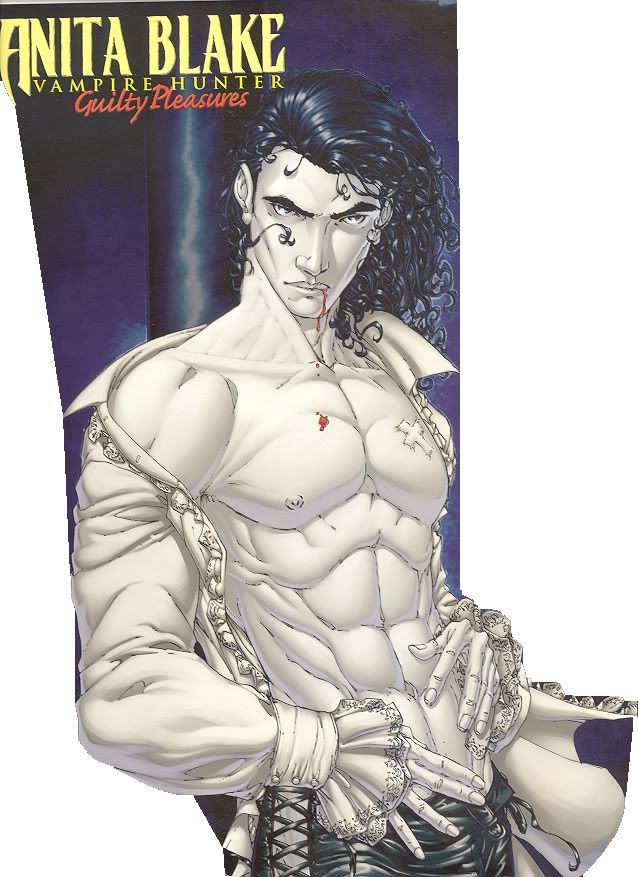 --Forbidden sexuality. Dracula has long been interpreted as a novel which speaks in coded language about areas of sexuality rigidly repressed in the late Victorian environment that produced it. More recently, Laurell Hamilton, in her phenomenally successful Anita Blake series, has used vampires and other preternatural creatures as a signifier of the exotic attraction of marginalized minorities. One of the ongoing themes of the series is the seductive power of the vampire, and later books in the series have included massive amounts of violent, steamy sex scenes, alternated with violence and descriptions of sexy vampire fashion, in some cases at the expense of the plot.
--Forbidden sexuality. Dracula has long been interpreted as a novel which speaks in coded language about areas of sexuality rigidly repressed in the late Victorian environment that produced it. More recently, Laurell Hamilton, in her phenomenally successful Anita Blake series, has used vampires and other preternatural creatures as a signifier of the exotic attraction of marginalized minorities. One of the ongoing themes of the series is the seductive power of the vampire, and later books in the series have included massive amounts of violent, steamy sex scenes, alternated with violence and descriptions of sexy vampire fashion, in some cases at the expense of the plot.
--homosexuality. Starting with Rice in the 1970s, vampires have been used as a metaphor, or even an outright description, of homosexuality. One of the traditional aspects of vampirism is that vampires reproduce through seduction and conversion, as opposed to biological procreation, and this, for good or ill, has been seen as bearing certain similarities to homosexuality. The epicene, androgynous vampires seen in much recent film and fiction, who represent a lifestyle far removed from the mundane world, make a reasonable facsimile of the stereotypic gay subculture.
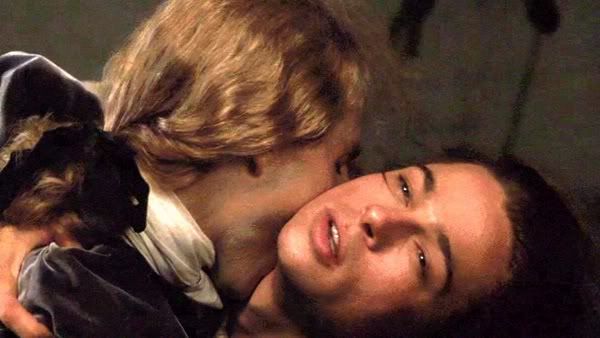 --AIDS or other disease. Vampirism in Stephen King’s Salem’s Lot, for example, operates much as a contagious disease, and compares easily to the killer virus in King’s The Stand. The AIDS connection is also fairly simple, with vampirism in many works being a blood-bourne illness transmitted by sexual contact, assuming the vampire’s bite to be an expression of his or her sexuality.
--AIDS or other disease. Vampirism in Stephen King’s Salem’s Lot, for example, operates much as a contagious disease, and compares easily to the killer virus in King’s The Stand. The AIDS connection is also fairly simple, with vampirism in many works being a blood-bourne illness transmitted by sexual contact, assuming the vampire’s bite to be an expression of his or her sexuality.
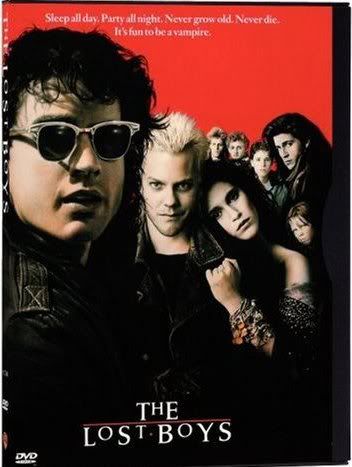 --drug addiction/ alcoholism. In The Lost Boys (1987), the main character falls in with evil companions, who provide him with mind-altering substances. The teenager subsequently becomes sullen and withdraws from his family, even as he wages an internal battle against the seductive forces that seek to draw him forever into the darkness. In short, he acts like a kid on drugs. The reluctant vampire/police detective hero of the tv series
--drug addiction/ alcoholism. In The Lost Boys (1987), the main character falls in with evil companions, who provide him with mind-altering substances. The teenager subsequently becomes sullen and withdraws from his family, even as he wages an internal battle against the seductive forces that seek to draw him forever into the darkness. In short, he acts like a kid on drugs. The reluctant vampire/police detective hero of the tv series
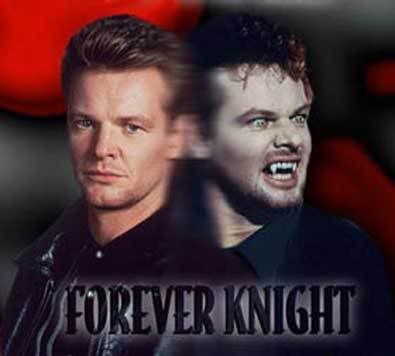 Forever Knight (1992-96), Nick Knight, displays more alcoholic characteristics, drinking his blood from refrigerated bottles (occasionally bingeing on it with hangover-like results), and forever seeking a cure that will bring him back to normal life. He, too, has evil companions that encourage him to embrace his vampirism, and a medical examiner/ would-be girlfriend who encourages him to persist in his struggle to end his addiction to blood.
Forever Knight (1992-96), Nick Knight, displays more alcoholic characteristics, drinking his blood from refrigerated bottles (occasionally bingeing on it with hangover-like results), and forever seeking a cure that will bring him back to normal life. He, too, has evil companions that encourage him to embrace his vampirism, and a medical examiner/ would-be girlfriend who encourages him to persist in his struggle to end his addiction to blood.
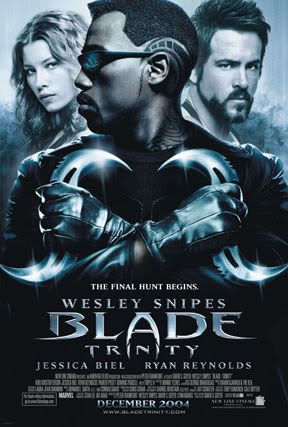 --corporate greed. The vampires in the Blade movies, the short-lived television series
--corporate greed. The vampires in the Blade movies, the short-lived television series

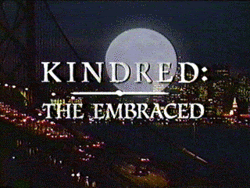 Kindred: the Embraced (1996), and the more recent
Kindred: the Embraced (1996), and the more recent
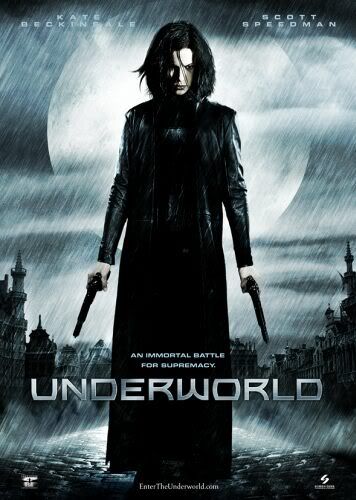 Underworld operate within a rigidly structured, hierarchical, seemingly corporate world, with complex interrelationships and goals. The lone predator, simply out for blood and kicks, has vanished in these worlds within a defined power structure. It seems like this would take all the fun out of vampirism, reducing it to yet another bloody climb up the corporate ladder.
Underworld operate within a rigidly structured, hierarchical, seemingly corporate world, with complex interrelationships and goals. The lone predator, simply out for blood and kicks, has vanished in these worlds within a defined power structure. It seems like this would take all the fun out of vampirism, reducing it to yet another bloody climb up the corporate ladder.
There is a not-uncommon disconnect between current vampire film and fiction. The vampire movie tends to focus more on action and violence, and the vampire hunter (like Blade or
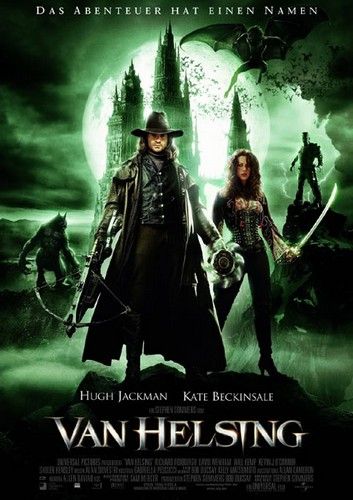 Hugh Jackman’s Van Helsing) takes a central role. Destruction of the vampires is the paramount goal. In television,
Hugh Jackman’s Van Helsing) takes a central role. Destruction of the vampires is the paramount goal. In television,
 Buffy the Vampire Slayer exemplifies this,
Buffy the Vampire Slayer exemplifies this,
 (okay, I had to throw in this picture, since Rupert Giles is a hero to vampfan librarians everywhere) although that series and its spinoff, Angel, also presented a sympathetic,
(okay, I had to throw in this picture, since Rupert Giles is a hero to vampfan librarians everywhere) although that series and its spinoff, Angel, also presented a sympathetic,
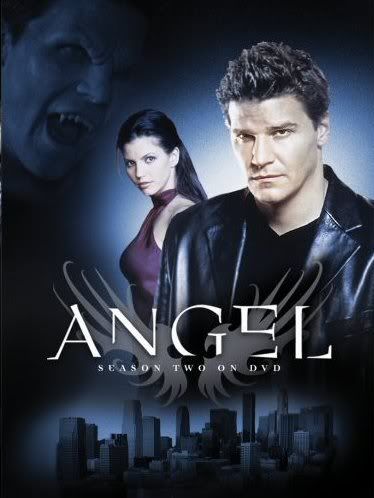
heroic vampire in amongst the legions of demons and evil vampires dispatched by the title heroine.
More recent films, such as
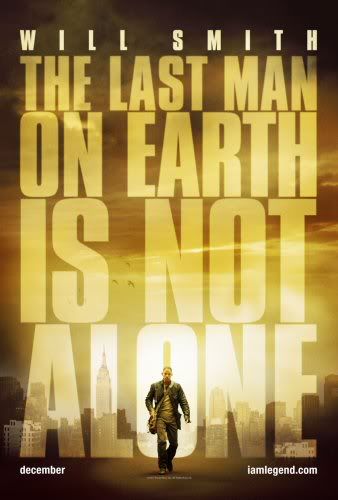 I am Legend and
I am Legend and
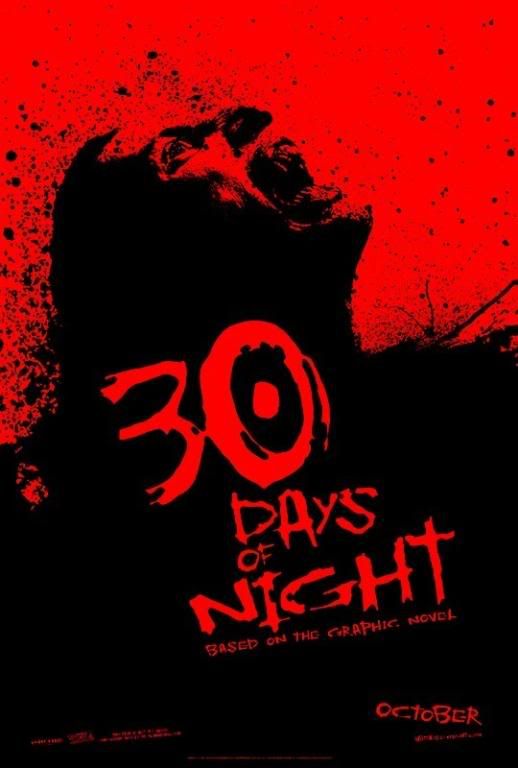 30 Days of Night present vamps more like the folkloric revenants than the suave, cultured vamps of
30 Days of Night present vamps more like the folkloric revenants than the suave, cultured vamps of
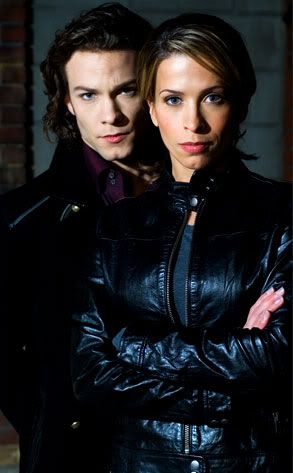
Blood Ties,
 Moonlight, or a host of romance novels.
Moonlight, or a host of romance novels.
Also, apologies for taking so long to update. This is the next to last part.
From Lord Ruthven to Mick St. John: 200 Years of Vampires
PART FOUR
PART FOUR
Rise of the Heroic Vampire
In 1967, the first major sympathetic vampire emerged into the daylight of an afternoon soap opera.


The stage was set for the entrance in the 1970s of two of the most durable and widely read vampire series in the history of the genre: Anne Rice’s Vampire Chronicles and Chelsea Quinn Yarbro’s St. Germain series. The contemporary vampire had arrived.
And just how were these two vampires (and their associates) different from the fanged bloodsuckers of the past?
Anne Rice broke new ground in several ways with Interview with the Vampire in 1976. This was the first mainstream success of a vampire novel for a female author. Although vampires had long held a serious attraction for women, the writers for the most part had been men. Since the publication of Interview, the most successful vampire writers, including Rice, Yarbro, Laurell Hamilton, P.N. Elrod, among others, have been women.





Claudia, the vampire woman trapped in a child’s body, is another of Rice’s innovations on the theme. At first, she forms the child in a parodic nuclear family with Louis and Lestat (a theme which is capitalized on in Neil Jordan’s 1994 film version), but her gradual mental development into a sophisticated predator horrifically appearing to her victims as a beautiful little girl is perhaps the most chilling aspect of the entire novel.
Interview contrasts nicely with Stephen King’s very traditional vampire novel published the previous year, Salem’s Lot.

King essentially transplants Dracula, in the form of Kurt Barlow, to a small town in Maine. Barlow’s vampirism is highly contagious, with everyone bitten turning quickly into a vampire, and very soon the town is hip-deep in very plebeian vampires.

In 1979, Hotel Transylvania introduced the world to the most urbane, gentle vampire it had yet seen. The Comte St. Germain, based faithfully upon the records of a genuine 18th century charlatan and alchemist, who takes sustenance as much from physical intimacy as from the small amount of blood he requires. Throughout the series, which has grown to over 22 books, with another due in December 2009, as well as a handful of associated books, Yarbro has explored the 4000 year life of her vampire hero. Most often he is cast as an observer, the ultimate outsider in every culture, who exemplifies civilized behavior and tender concern for his various lovers throughout the ages. What horror is found in these novels lies not with the vampires, but with the inhumanity of men to each other, and especially to women. For example, in Tempting Fate (1982),

While the first vampire based on an historical figure is, without a doubt, the venerable Dracula, whose ties







Depending on who you read, vampirism is a metaphor for any of a number of things, and there will doubtless be more to come. Some of the more standard themes that vampirism can indicate are

--homosexuality. Starting with Rice in the 1970s, vampires have been used as a metaphor, or even an outright description, of homosexuality. One of the traditional aspects of vampirism is that vampires reproduce through seduction and conversion, as opposed to biological procreation, and this, for good or ill, has been seen as bearing certain similarities to homosexuality. The epicene, androgynous vampires seen in much recent film and fiction, who represent a lifestyle far removed from the mundane world, make a reasonable facsimile of the stereotypic gay subculture.







There is a not-uncommon disconnect between current vampire film and fiction. The vampire movie tends to focus more on action and violence, and the vampire hunter (like Blade or




heroic vampire in amongst the legions of demons and evil vampires dispatched by the title heroine.
More recent films, such as



Blood Ties,

End of Part Four
Next: Contemporary Vampires, continued
Next: Contemporary Vampires, continued
- MoonShadow
- Logan's WoW nemesis
- Posts: 938
- Joined: Sun Jan 18, 2009 2:26 am
- Location: Sitting on a staircase somewhere
Re: A Short History of Vampire Literature (updated 8/27)
I too am glad that you took the time to post this here. I thoroughly enjoyed your presentation.
thanks lady!
thanks lady!
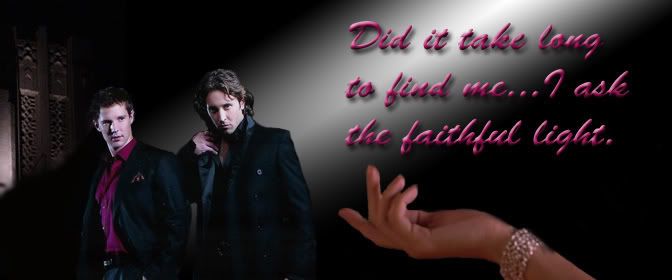
Banner by Lilly
Be bloody, bold, and resolute; laugh to scorn
The power of man, for none of woman born
Shall harm Macbeth.
Macbeth, 4. 1
- darkstarrising
- 100% Moonlightaholic
- Posts: 11014
- Joined: Sat Jan 17, 2009 2:25 am
Re: A Short History of Vampire Literature (updated 8/27)
Lucky,
again, thanks for the time and effort you've put in for posting this....the history is fascinating, seeing how we've changed our perception of vampires from the utterly repulsive Nosferatu to the incredibly appealing Mick St. John and others.
You've also identified some books and authors I wasn't familiar with....that will give me some more reading to do!
again, thanks for the time and effort you've put in for posting this....the history is fascinating, seeing how we've changed our perception of vampires from the utterly repulsive Nosferatu to the incredibly appealing Mick St. John and others.
You've also identified some books and authors I wasn't familiar with....that will give me some more reading to do!
darkstarrising
Love – the universal language, the story of Moonlight
View My Fanfic Index

Thanks to the talented and generous Phoenix for my beautiful banner!
Love – the universal language, the story of Moonlight
View My Fanfic Index

Thanks to the talented and generous Phoenix for my beautiful banner!
- Luxe de Luxe
- Sire
- Posts: 3285
- Joined: Sat Jan 17, 2009 2:50 pm
Re: A Short History of Vampire Literature (updated 8/27)
You couldn't resist ending with a pic of Josef, huh?  thanks, Lucky. This is a fascinating read.
thanks, Lucky. This is a fascinating read.

Banner by the talented Hot Micks
- francis
- 100% Moonlightaholic
- Posts: 11556
- Joined: Sat Jan 17, 2009 9:45 am
Re: A Short History of Vampire Literature (updated 8/27)
So Moonlight was all about Josef, right? Well, of course!
Thank you for this interesting summary on vampire literature!
Thank you for this interesting summary on vampire literature!
-
Kade1301
- Kostan Industries intern
- Posts: 38
- Joined: Fri Aug 21, 2009 11:27 am
Re: A Short History of Vampire Literature (updated 8/27)
Great work, Lucky!
May I add one of my favorite vampire parodies? It's "Dracula Father and Son" (Dracula père et fils) from 1976, with Christopher Lee as the old count (with a slightly mis-adjusted son) in a modern world. The coffin-in-hotel-hall scene and the coffin-buying scene are priceless!
May I add one of my favorite vampire parodies? It's "Dracula Father and Son" (Dracula père et fils) from 1976, with Christopher Lee as the old count (with a slightly mis-adjusted son) in a modern world. The coffin-in-hotel-hall scene and the coffin-buying scene are priceless!
- librarian_7
- Forever Moonlightaholic
- Posts: 23481
- Joined: Fri Jan 16, 2009 7:21 pm
- Location: wherever Josef is
- Contact:
Re: A Short History of Vampire Literature (updated 8/27)
Disclaimer—This article surveys a great deal of material, and there will be many topics I simply am not be able to cover in it. Apologies in advance if I miss your favorite vamp…you can rebut me on the discussion boards.
In fiction and television, where vampires tend to be the main and continuing characters, the tendency of the vampire has been to be a more sympathetic hero, often tortured by his alienation from human society, and sometimes badly behaved, but seldom evil. The 1978 Broadway revival of
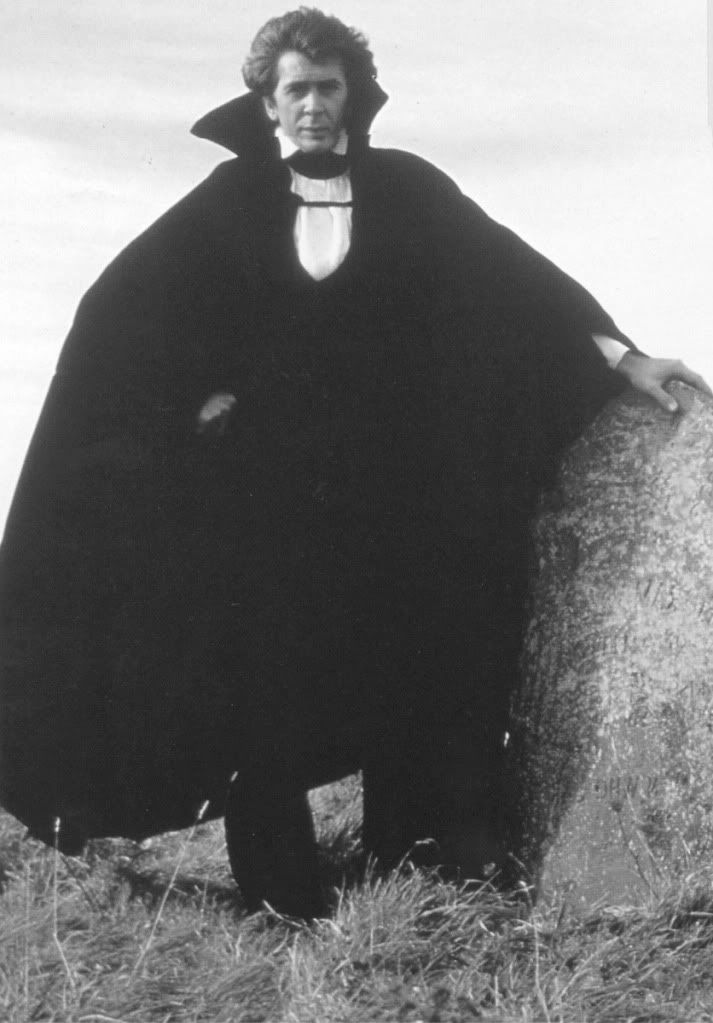
Dracula, followed by John Badham’s 1979 movie, cast Frank Langella as a sexy Count, and once again female fans were hooked. The title character of Francis Ford Coppola’s vampire epic, Bram Stoker’s Dracula (1992),
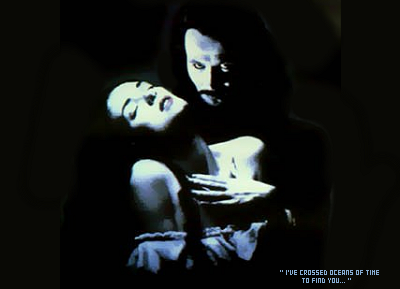 portrayed Dracula as motivated primarily by the memory of his lost love, reincarnated in the early 20th century as Mina Harker, and made of him more
portrayed Dracula as motivated primarily by the memory of his lost love, reincarnated in the early 20th century as Mina Harker, and made of him more
a tragic figure defying God, fate, and death than a simple bloodsucking monster. It should perhaps be noted that despite the title, the plot line of Bram Stoker’s Dracula only passing resemblance to the original novel.
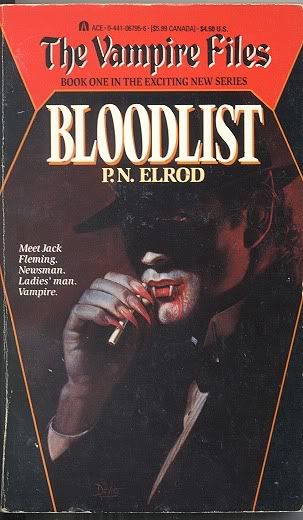 P. N. Elrod, author of the popular Vampire Files series, features Depression era hard-boiled Chicago detective Jack Fleming, who also happens to be a vampire, courtesy of an old lover. He has the highly useful if sometimes problematic ability to transform himself into a cold, nearly invisible mist. The main problem with this is that it severely impacts his ability to perceive his surroundings. Fleming is also unique in his happy, ongoing relationship with a girlfriend, Bobbi, who is fully aware of his vampirism and happy to accommodate his needs. And Fleming is only the first of several series of “fedoras and fangs” vampire P.I.’s in fiction. Recent examples are Charlie Huston’s Joe Pitt series,
P. N. Elrod, author of the popular Vampire Files series, features Depression era hard-boiled Chicago detective Jack Fleming, who also happens to be a vampire, courtesy of an old lover. He has the highly useful if sometimes problematic ability to transform himself into a cold, nearly invisible mist. The main problem with this is that it severely impacts his ability to perceive his surroundings. Fleming is also unique in his happy, ongoing relationship with a girlfriend, Bobbi, who is fully aware of his vampirism and happy to accommodate his needs. And Fleming is only the first of several series of “fedoras and fangs” vampire P.I.’s in fiction. Recent examples are Charlie Huston’s Joe Pitt series,
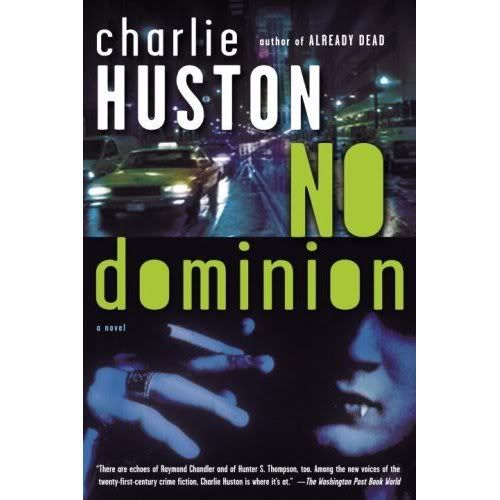 and Mario Acevedo’s Felix Gomez,
and Mario Acevedo’s Felix Gomez,
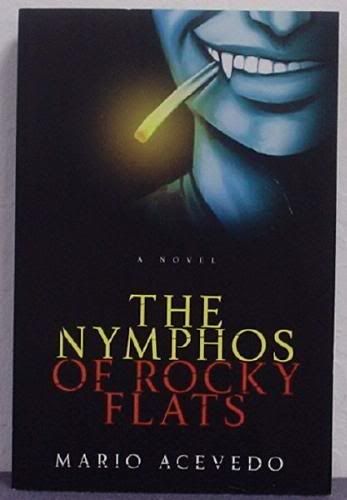 Notice the obligatory cigarette and fangs in the cover art.
Notice the obligatory cigarette and fangs in the cover art.
The vampire romance novel has become a staple over the past fifteen years. Lori Herter, Maggie Shayne, and Linda Lael Miller produced vampire romance series in the early 1990’s, and a search of Amazon yields literally dozens of titles like Embrace the Night, Kiss of Darkness, Eternity, Forever and the Night, Dark Prince, Midnight Enchantment…and so on, by such authors as
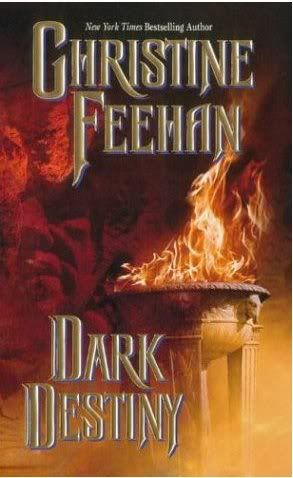 Christine Feehan,
Christine Feehan,
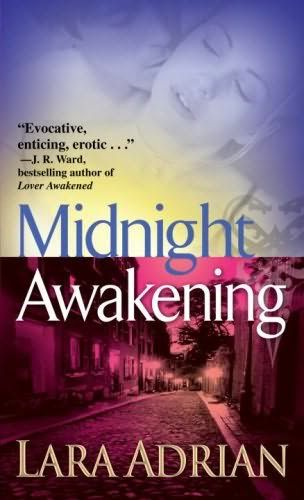 Lara Adrian,
Lara Adrian,
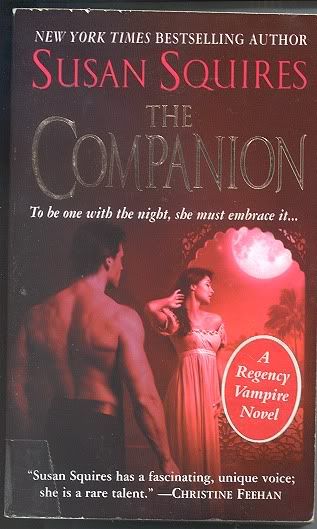 Susan Squires, and
Susan Squires, and
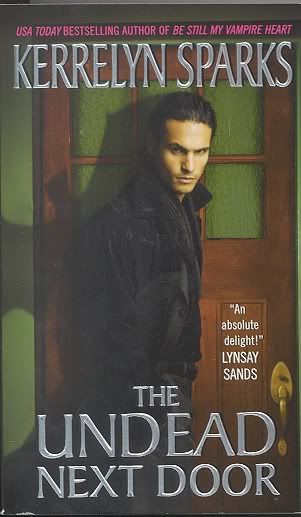 Kerrelyn Sparks, to name but a few. Vampires are the ultimate bad boys, tall, dark, handsome and sexy, and with their tendency in fiction to have accumulated vast wealth, they become very attractive.
Kerrelyn Sparks, to name but a few. Vampires are the ultimate bad boys, tall, dark, handsome and sexy, and with their tendency in fiction to have accumulated vast wealth, they become very attractive.
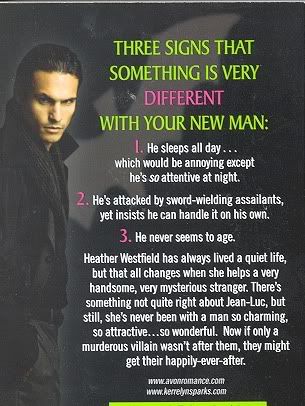 One is reminded of Tanya Huff’s 400 year old vampire Henry Fitzroy, who writes romance novels for a living (or graphic novels in his television incarnation), and when queried about his failure to make stellar long term investments, responds something along the lines of, “How was I supposed to know IBM was a good buy? I’m a vampire, not a psychic.”)
One is reminded of Tanya Huff’s 400 year old vampire Henry Fitzroy, who writes romance novels for a living (or graphic novels in his television incarnation), and when queried about his failure to make stellar long term investments, responds something along the lines of, “How was I supposed to know IBM was a good buy? I’m a vampire, not a psychic.”)
Another factor that may contribute to the popularity of the vampire as a romance hero is his ability to protect his beloved from the vagaries of fate. Sherilyn Kenyon,
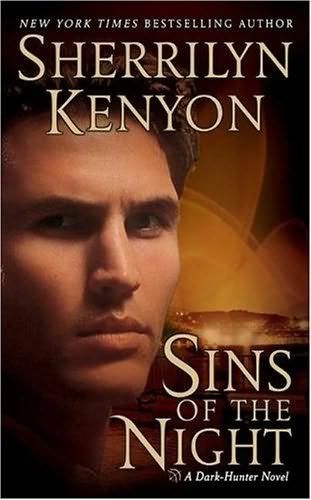 who has developed a very odd mix of vampires (good and bad), werewolves, Greek gods, Atlanteans, and other immortals in her Dark Hunters series, makes this very clear. Although her heroines tend to be strong, liberated women, they can always use a better set of muscles to get them through their tribulations.
who has developed a very odd mix of vampires (good and bad), werewolves, Greek gods, Atlanteans, and other immortals in her Dark Hunters series, makes this very clear. Although her heroines tend to be strong, liberated women, they can always use a better set of muscles to get them through their tribulations.

Another very popular current series is the Black Dagger Brotherhood of J. R. Ward, now up to seven novels, which feature vampires who are a member of a separate race, living among us and feeding only from each other.
 These are the ultimate leather-clad bad boys, who fight, drink, and wench through very long lives, until they find the one vampire woman who can match their passion.
These are the ultimate leather-clad bad boys, who fight, drink, and wench through very long lives, until they find the one vampire woman who can match their passion.
Closely related to the romance novels are the “chick-lit “ novels of such authors as
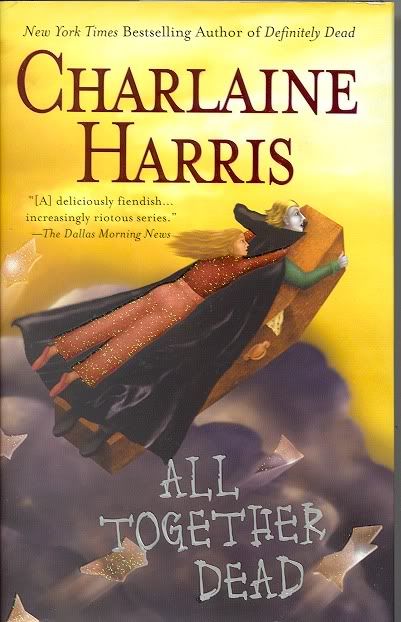 Charlaine Harris, whose “Southern Vampire” novels with the spunky telepathic waitress Sookie Stackhouse is now the basis for an HBO series, True Blood,
Charlaine Harris, whose “Southern Vampire” novels with the spunky telepathic waitress Sookie Stackhouse is now the basis for an HBO series, True Blood,
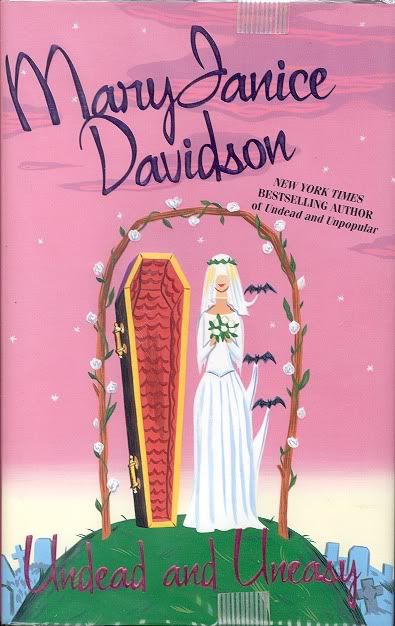 and the quirky Betsy Taylor, a shoe shopping fanatic who unexpectedly finds herself Queen of the Undead in MaryJanice Davidson’s series of Undead novels.
and the quirky Betsy Taylor, a shoe shopping fanatic who unexpectedly finds herself Queen of the Undead in MaryJanice Davidson’s series of Undead novels.
Similarly humorous takes on the vampire romance are found in light-hearted novels such as those of Michelle Rowen,
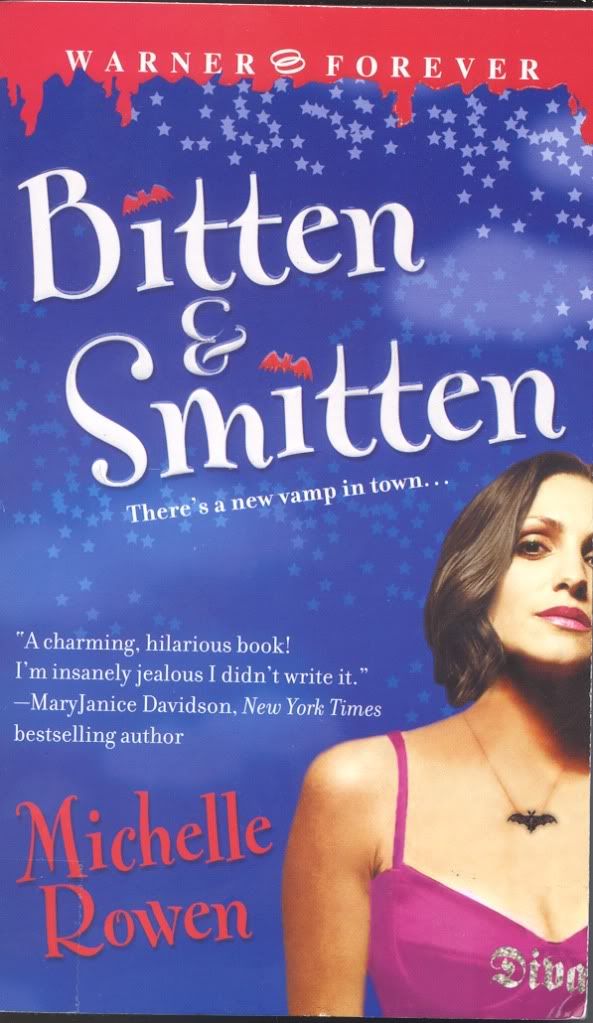 Lynsay Sands, and
Lynsay Sands, and
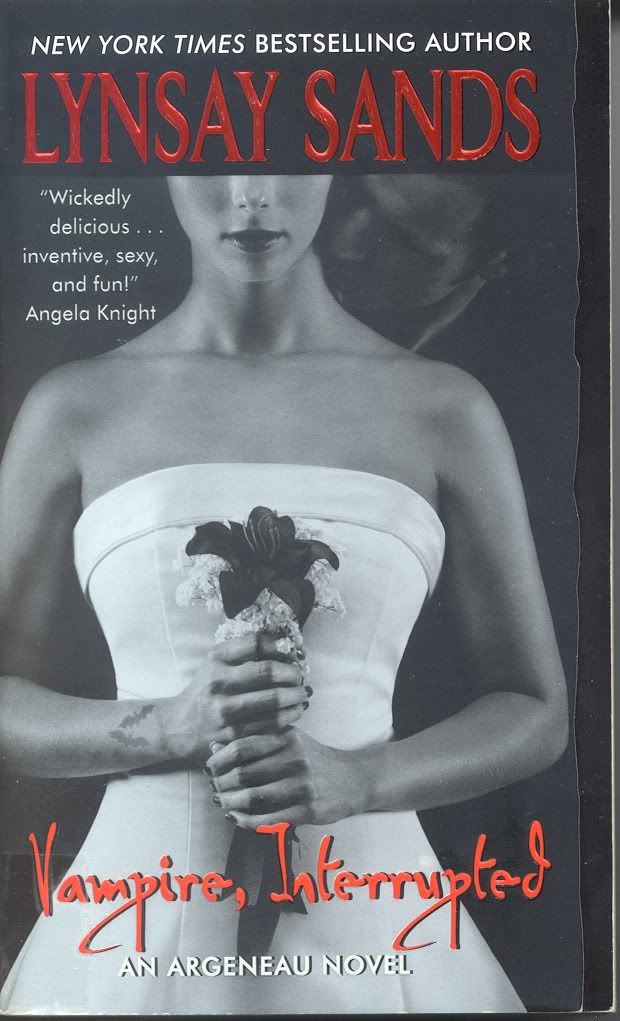
Michelle Bardsley.
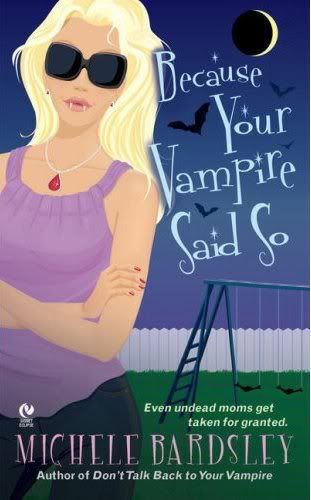
There has also been an explosion of vampire novels for young adults. Most notable, perhaps, is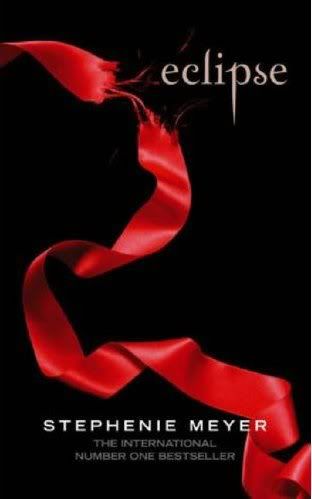
Stephenie Meyer’s Twilight series, but I also wanted to mention
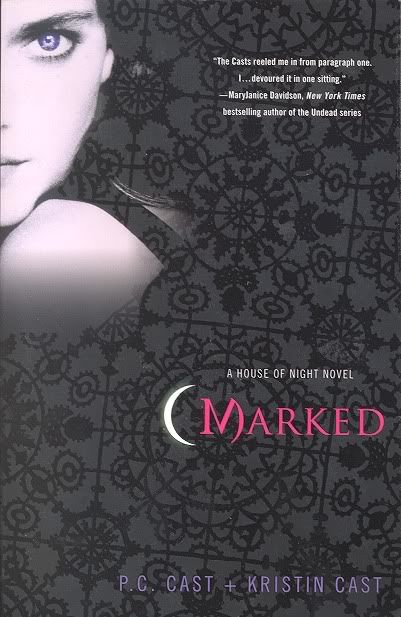 P.C. and Kristin Cast’s House of Night series, which can best be described as Harry Potter meets Dracula, as it is set at a boarding school for adolescent fledgling vamps, Fangwarts, if you will. In addition,
P.C. and Kristin Cast’s House of Night series, which can best be described as Harry Potter meets Dracula, as it is set at a boarding school for adolescent fledgling vamps, Fangwarts, if you will. In addition,
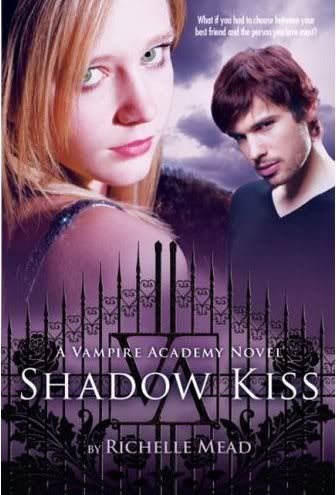
the Vampire Academy books are popular, and there is the sinister world
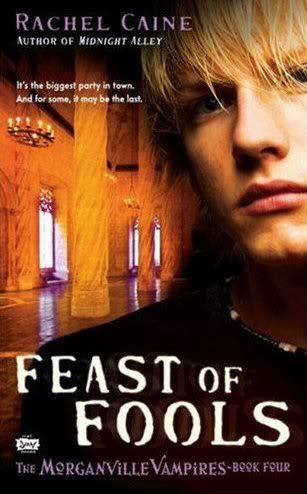 of the Morganville vampires, a very dark series by Rachel Caine. And every week seems to bring new entries to the genre. Not to say that the marketing of these series piggybacks, but compare…
of the Morganville vampires, a very dark series by Rachel Caine. And every week seems to bring new entries to the genre. Not to say that the marketing of these series piggybacks, but compare…
the classic Twilight cover, with
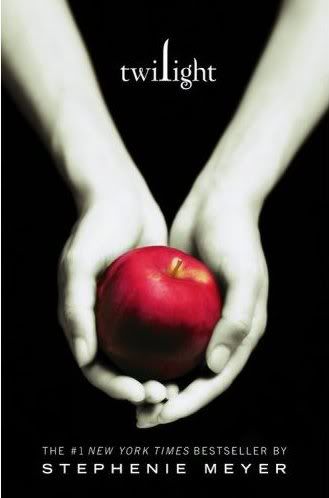
a new edition of Vampire Diaries.

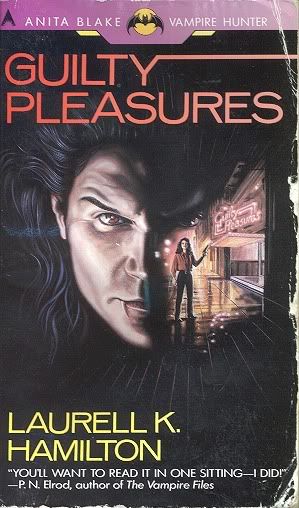 The success of Laurell Hamilton’s Anita Blake series has spawned any number of similar series as well, including such books as
The success of Laurell Hamilton’s Anita Blake series has spawned any number of similar series as well, including such books as
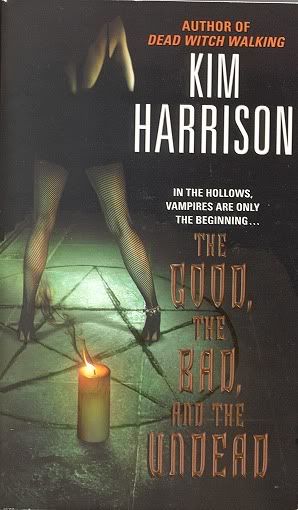
Kim Harrison’s novels of the Hollows,
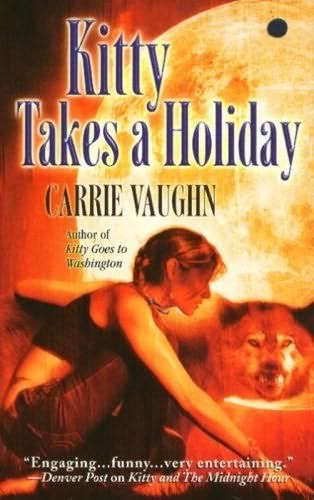 Carrie Vaughn’s Kitty series,
Carrie Vaughn’s Kitty series,
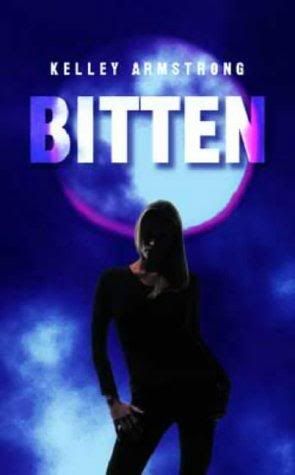 Kelley Armstrong’s Women of the Otherworld, and numerous others.
Kelley Armstrong’s Women of the Otherworld, and numerous others.
With all this, you might expect that the more literary vampires have retreated to their coffins, but that is not, in fact, the case. A sampling of literary vamps over the past twenty years would include
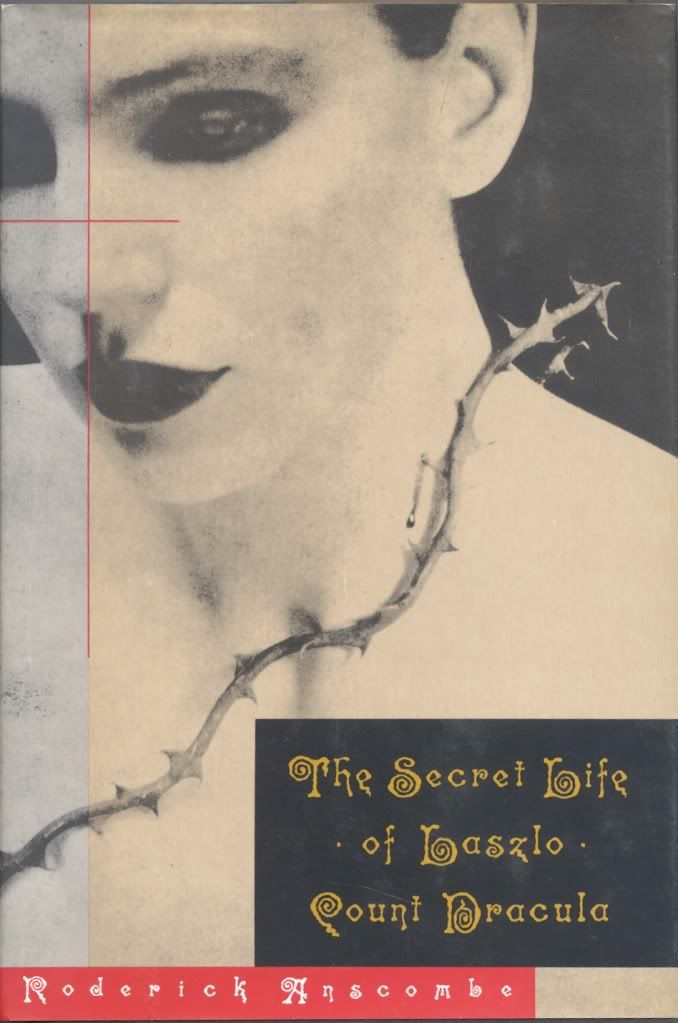 Roderick Anscombe’s Sercret Life of Lazlo, Count Dracula,
Roderick Anscombe’s Sercret Life of Lazlo, Count Dracula,
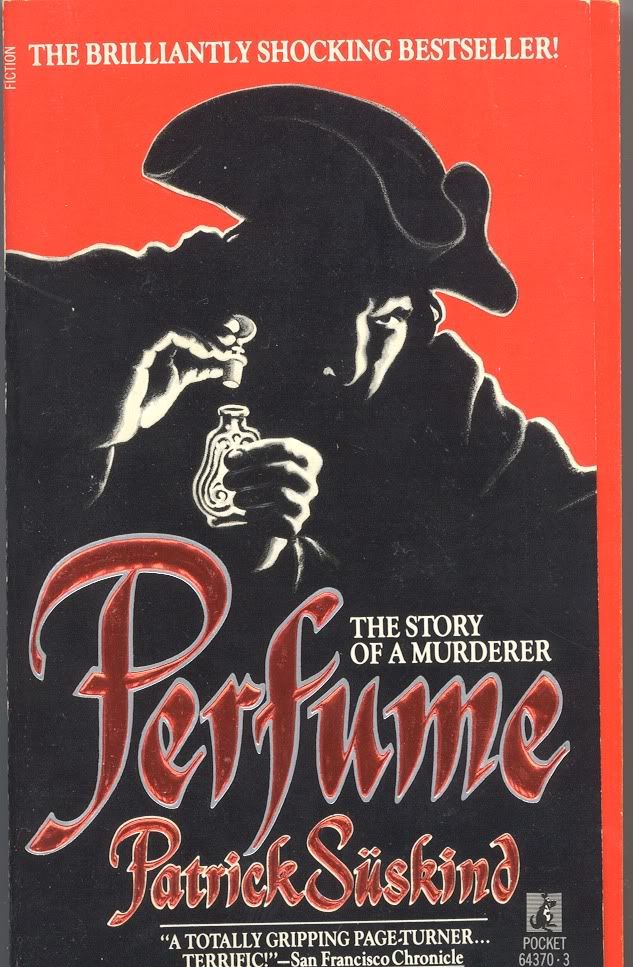
Perfume, by Patrick Suskind, who tells of a different kind of vampire who kills by extracting the scent of his victims, and, more recently,
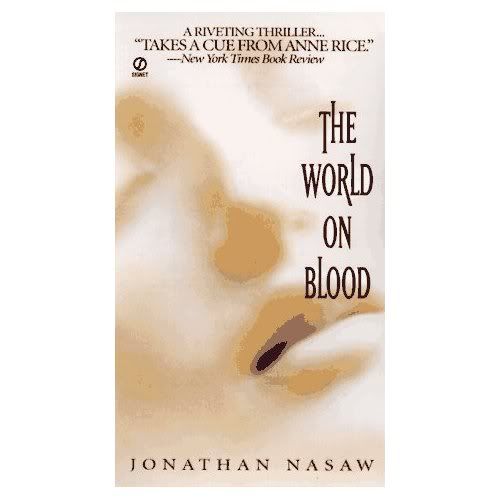 Jonathan Nasaw’s The World on Blood,
Jonathan Nasaw’s The World on Blood,
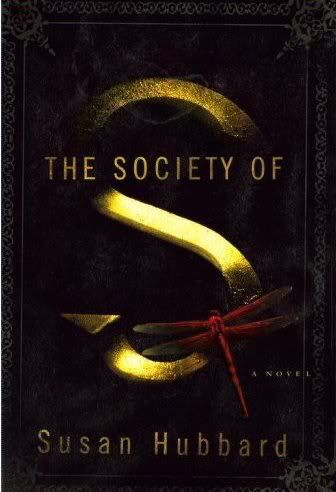
Susan Hubbard’s The Society of S, and
 Elizabeth Kostova’s The Historian.
Elizabeth Kostova’s The Historian.
The history of the vampire on screen—both movies and television—is a long one. I’ve mentioned a number of movies in passing; there are literally hundreds out there,
 from F.W. Murnau’s 1922 silent classic, Nosferatu,
from F.W. Murnau’s 1922 silent classic, Nosferatu,
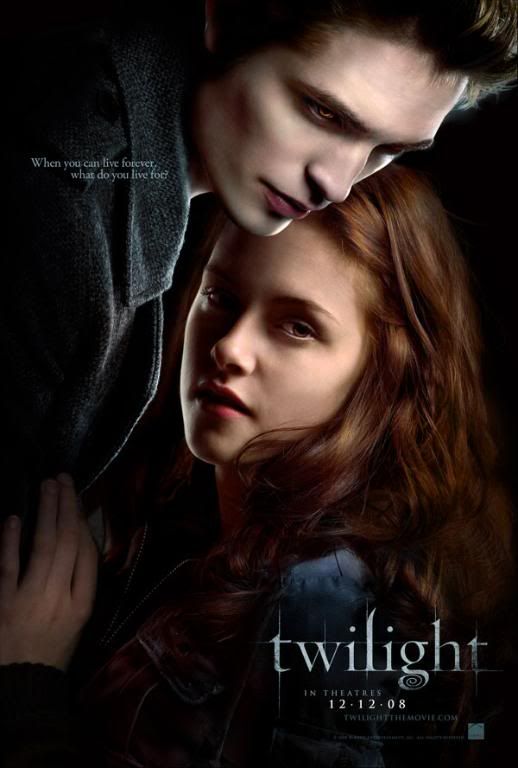 to the recent adaptation of Twilight. And we’ve commented on the major vampire series on television. Some have said there have been too many vampires on tv over the years, but their numbers pale in comparison to the countless doctors, lawyers, housewives, and policemen we have seen. From
to the recent adaptation of Twilight. And we’ve commented on the major vampire series on television. Some have said there have been too many vampires on tv over the years, but their numbers pale in comparison to the countless doctors, lawyers, housewives, and policemen we have seen. From
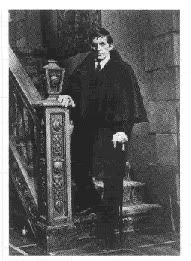 Barnabas Collins, through
Barnabas Collins, through
 Nicholas Knight,
Nicholas Knight,
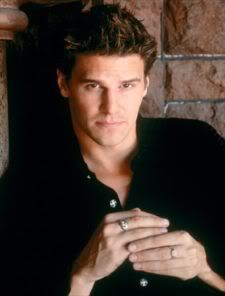 Angel, and
Angel, and
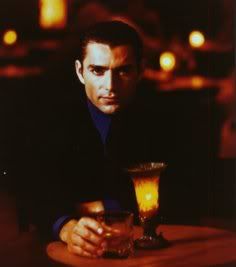 Julian Luna to
Julian Luna to
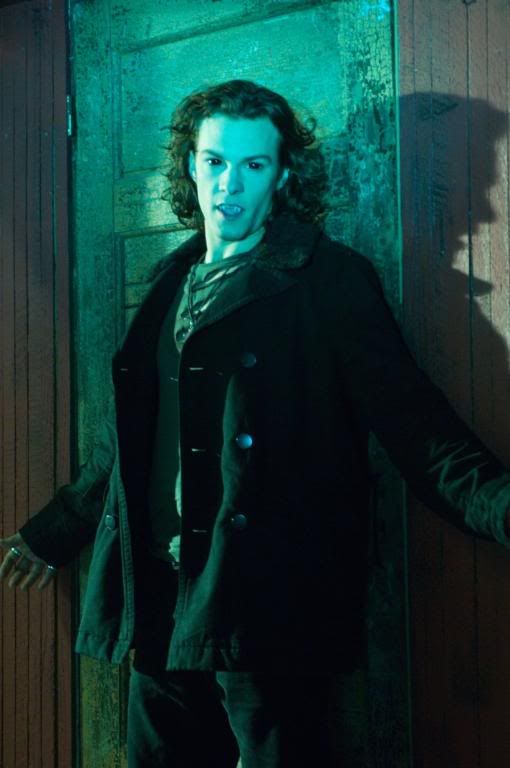 Henry Fitzroy,
Henry Fitzroy,
 Mick St. John,
Mick St. John,
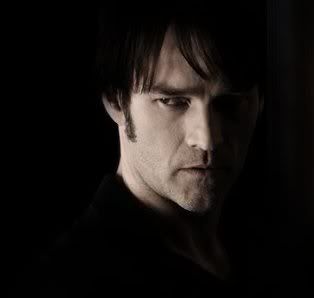 and Bill Compton, the vampires have presented tormented, heroic characters with complex stories, and captured our hearts within their immortal hands.
and Bill Compton, the vampires have presented tormented, heroic characters with complex stories, and captured our hearts within their immortal hands.
We’ve talked about books, movies, and television…but there are other vampires out there. Vampires have become very popular in online and traditional role-playing games, such as
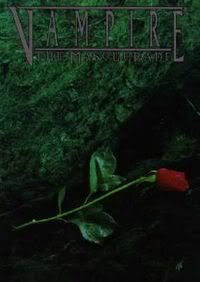 Vampire: the Masquerade and
Vampire: the Masquerade and
 Reign of Blood. The vampire is a frequent character in
Reign of Blood. The vampire is a frequent character in
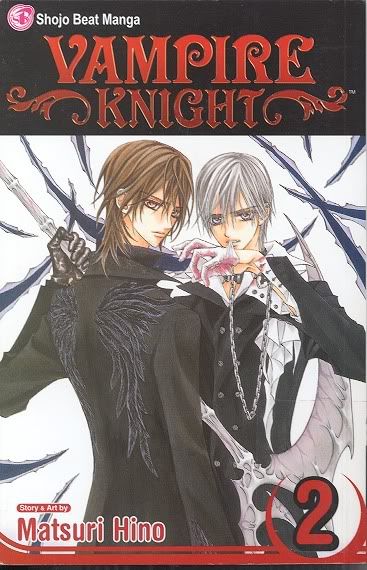 anime and manga,
anime and manga,
 graphic novels, and
graphic novels, and
 comic books, from the beginning of that format through the present. This is the area that I need to spend the most time exploring in the future, but as you can see, the vampire is so widespread throughout modern culture, that, like Dr, Van Helsing, one could chase vampires for a lifetime without ever fully catching up. The vamps are always one or two steps ahead.
comic books, from the beginning of that format through the present. This is the area that I need to spend the most time exploring in the future, but as you can see, the vampire is so widespread throughout modern culture, that, like Dr, Van Helsing, one could chase vampires for a lifetime without ever fully catching up. The vamps are always one or two steps ahead.
 What all these vampires have in common is conditional immortality and the need for at least a little blood. They are good, evil, male, female, gay, straight, bi, newly dead or millennia old. Some can fly, some can vanish, some die each sunrise, others walk (if somewhat gingerly) at noon. Some are born vampires, some have vampirism thrust upon them. Vampires are European noblemen, vampires are American punks. In the hands of contemporary writers, vampires have assumed all manner of attributes. The continuing lure and appeal of the vampire to a modern audience is held within this almost infinite flexibility.
What all these vampires have in common is conditional immortality and the need for at least a little blood. They are good, evil, male, female, gay, straight, bi, newly dead or millennia old. Some can fly, some can vanish, some die each sunrise, others walk (if somewhat gingerly) at noon. Some are born vampires, some have vampirism thrust upon them. Vampires are European noblemen, vampires are American punks. In the hands of contemporary writers, vampires have assumed all manner of attributes. The continuing lure and appeal of the vampire to a modern audience is held within this almost infinite flexibility.
The critics we mentioned at the beginning predicted, if not the demise of the vampire in fiction and other media, at least a slackening in its popularity. On the contrary, over the past few decades, the vampire has found an ever increasing fan base, and each new reinterpretation of his story has provided a transfusion of life-sustaining blood.
 August, 2008
August, 2008
So, Mick, it’s not that vampires are back in style. They never went out. And will the vampire continue to draw us to the dark side?
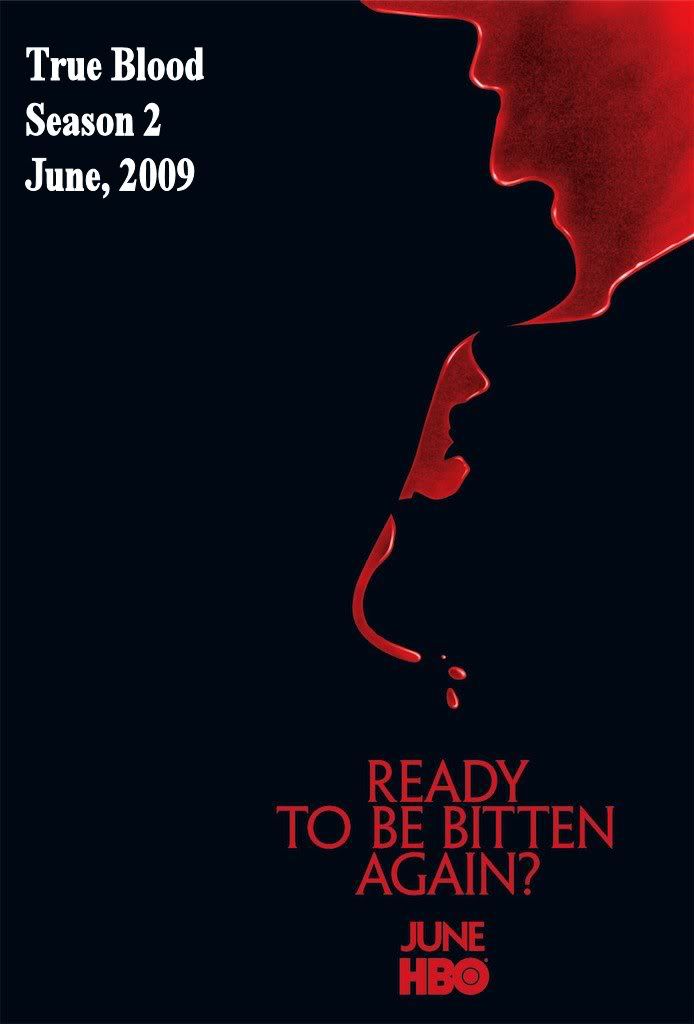
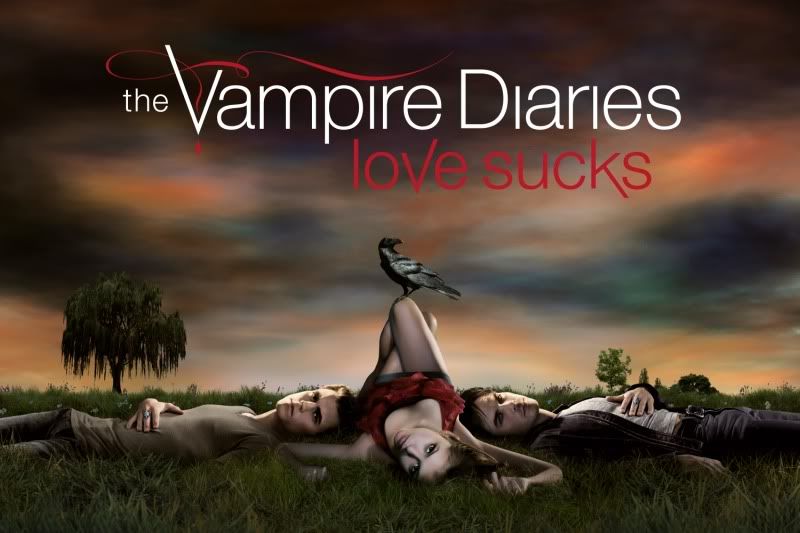
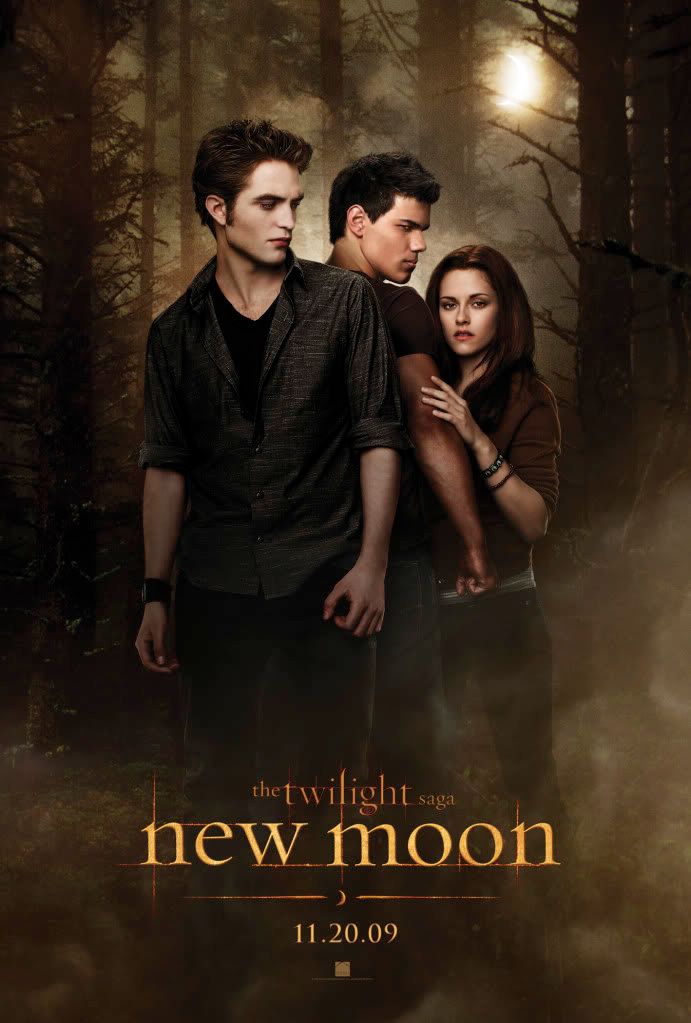
Well, let’s just say, the buzz is good.
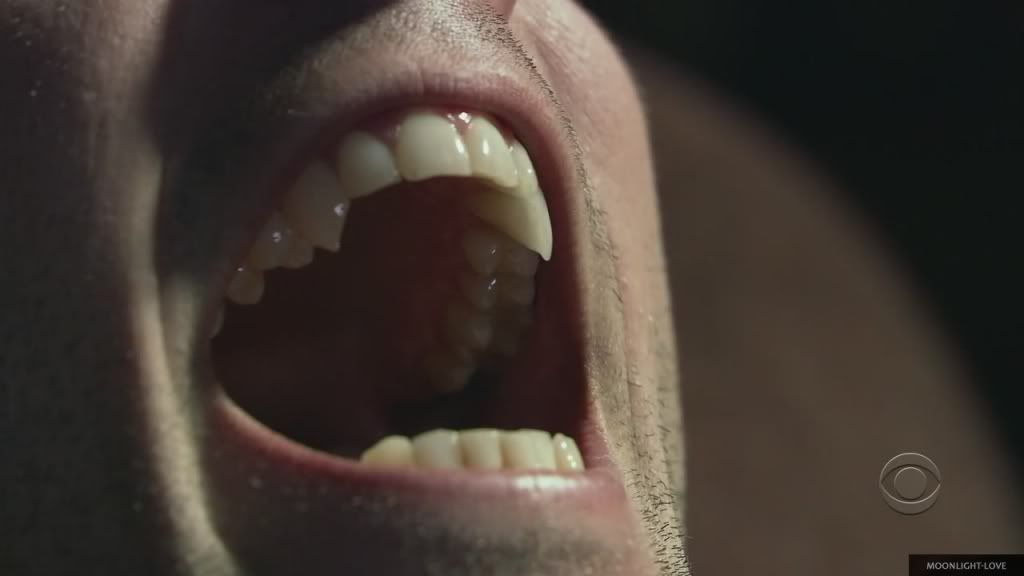
From Lord Ruthven to Mick St. John: 200 Years of Vampires
PART FIVE--CONCLUSION
PART FIVE--CONCLUSION
In fiction and television, where vampires tend to be the main and continuing characters, the tendency of the vampire has been to be a more sympathetic hero, often tortured by his alienation from human society, and sometimes badly behaved, but seldom evil. The 1978 Broadway revival of

Dracula, followed by John Badham’s 1979 movie, cast Frank Langella as a sexy Count, and once again female fans were hooked. The title character of Francis Ford Coppola’s vampire epic, Bram Stoker’s Dracula (1992),

a tragic figure defying God, fate, and death than a simple bloodsucking monster. It should perhaps be noted that despite the title, the plot line of Bram Stoker’s Dracula only passing resemblance to the original novel.



The vampire romance novel has become a staple over the past fifteen years. Lori Herter, Maggie Shayne, and Linda Lael Miller produced vampire romance series in the early 1990’s, and a search of Amazon yields literally dozens of titles like Embrace the Night, Kiss of Darkness, Eternity, Forever and the Night, Dark Prince, Midnight Enchantment…and so on, by such authors as





Another factor that may contribute to the popularity of the vampire as a romance hero is his ability to protect his beloved from the vagaries of fate. Sherilyn Kenyon,


Another very popular current series is the Black Dagger Brotherhood of J. R. Ward, now up to seven novels, which feature vampires who are a member of a separate race, living among us and feeding only from each other.

Closely related to the romance novels are the “chick-lit “ novels of such authors as


Similarly humorous takes on the vampire romance are found in light-hearted novels such as those of Michelle Rowen,


Michelle Bardsley.

There has also been an explosion of vampire novels for young adults. Most notable, perhaps, is

Stephenie Meyer’s Twilight series, but I also wanted to mention


the Vampire Academy books are popular, and there is the sinister world

the classic Twilight cover, with

a new edition of Vampire Diaries.



Kim Harrison’s novels of the Hollows,


With all this, you might expect that the more literary vampires have retreated to their coffins, but that is not, in fact, the case. A sampling of literary vamps over the past twenty years would include


Perfume, by Patrick Suskind, who tells of a different kind of vampire who kills by extracting the scent of his victims, and, more recently,


Susan Hubbard’s The Society of S, and

The history of the vampire on screen—both movies and television—is a long one. I’ve mentioned a number of movies in passing; there are literally hundreds out there,









We’ve talked about books, movies, and television…but there are other vampires out there. Vampires have become very popular in online and traditional role-playing games, such as






The critics we mentioned at the beginning predicted, if not the demise of the vampire in fiction and other media, at least a slackening in its popularity. On the contrary, over the past few decades, the vampire has found an ever increasing fan base, and each new reinterpretation of his story has provided a transfusion of life-sustaining blood.

So, Mick, it’s not that vampires are back in style. They never went out. And will the vampire continue to draw us to the dark side?



Well, let’s just say, the buzz is good.
The End of the Beginning
Questions?
- Luxe de Luxe
- Sire
- Posts: 3285
- Joined: Sat Jan 17, 2009 2:50 pm
Re: A Short History of Vampire Literature (complete 9/08)
Wonderfully informative as always Lucky. I'd love us to get a list of the 100 best vampire films/novels going here. I also wondered whether your remarkable scholarship covered the depiction of vampires in foreign films? The Swedish film "Let the Right ONe In" was a truly remarkable and original take on the vamp film. A Korean vamp film "Thirst" was sold out at the Melbourne International Film Festival last month and got rave reviews.

Banner by the talented Hot Micks
- darkstarrising
- 100% Moonlightaholic
- Posts: 11014
- Joined: Sat Jan 17, 2009 2:25 am
Re: A Short History of Vampire Literature (complete 9/08)
Lucky,
Wow - I had no idea of the depth and breadth of popular vampire literature. Quite a spectrum, although some are more appealing than others. Thanks so much for putting this together.
Wow - I had no idea of the depth and breadth of popular vampire literature. Quite a spectrum, although some are more appealing than others. Thanks so much for putting this together.
darkstarrising
Love – the universal language, the story of Moonlight
View My Fanfic Index

Thanks to the talented and generous Phoenix for my beautiful banner!
Love – the universal language, the story of Moonlight
View My Fanfic Index

Thanks to the talented and generous Phoenix for my beautiful banner!
- wpgrace
- 100% Moonlightaholic
- Posts: 16429
- Joined: Sat Jan 17, 2009 2:25 pm
Re: A Short History of Vampire Literature (complete 9/08)
That was fantastic, Lucky. 
And The Historian scared the cr@p outta me...
And The Historian scared the cr@p outta me...
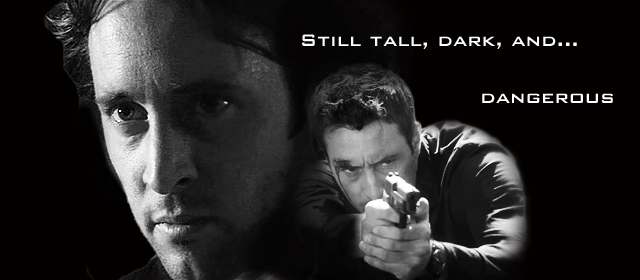
Banner by redwinter101. I miss you, Beloved.
Awesome avatar by the awesome, clever, and gracious Lilly.
If you read a lot of books you are considered well read. But if you watch a lot of TV, you're not considered well viewed. Lilly Tomlin
Grateful to Alex for Mick, Andy, and McG.
- darkstarrising
- 100% Moonlightaholic
- Posts: 11014
- Joined: Sat Jan 17, 2009 2:25 am
Re: A Short History of Vampire Literature (complete 9/08)
grace, I'm about halfway through 'The Historian'. Wonderful book, but it does make your skin crawl.wpgrace wrote:That was fantastic, Lucky.
And The Historian scared the cr@p outta me...
darkstarrising
Love – the universal language, the story of Moonlight
View My Fanfic Index

Thanks to the talented and generous Phoenix for my beautiful banner!
Love – the universal language, the story of Moonlight
View My Fanfic Index

Thanks to the talented and generous Phoenix for my beautiful banner!
- wondergirl9847
- Rogue vampire
- Posts: 1389
- Joined: Tue Jan 20, 2009 10:04 pm
Re: A Short History of Vampire Literature (complete 9/08)
*Puts Historian on list of books to read* Sounds interesting!
Thanks for putting this up for us to read, Lucky. Fantastic research and writing.
Thanks for putting this up for us to read, Lucky. Fantastic research and writing.
*Christy*




